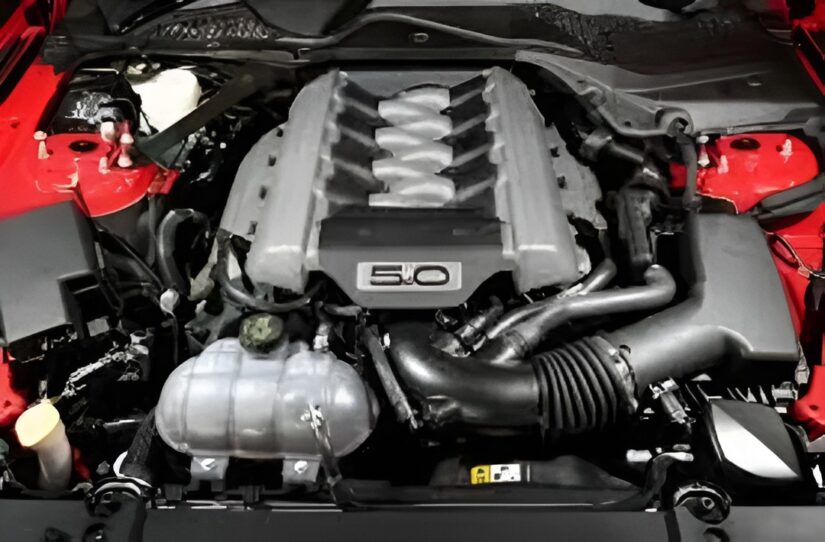
The Ford F-150 has dominated sales in the United States for decades. Known for its towing capacity and reliability, it has been marketed as a workhorse for families, businesses, and contractors. Yet recent Ford news coverage has shifted the narrative. Multiple class action lawsuit filings accuse Ford Motor Company of selling trucks with defective V8 Engine systems prone to excessive oil consumption. Owners argue that the so-called Oil-Thirsty V8 Engines suffer from design flaws leading to recurring engine problems, long-term damage, and costly repairs.
Background of the Lawsuits
The lawsuits revolve around the 5.0-liter Coyote V8 used in several Ford F-150 model years. Plaintiffs say the engines suffer from Oil Consumption Issues requiring quarts of engine oil to be added between routine oil change intervals. Drivers argue this is far beyond normal usage documented in the Owner’s Manual and recommended maintenance schedule.
According to the complaints, Technical service bulletins and even special service messages were issued internally to dealerships acknowledging problems such as faulty piston rings, piston ring assembly issues, and wear in the combustion chamber. Yet Ford allegedly continued selling the trucks without adequately disclosing the defects.
Understanding Oil Consumption
All engines consume some engine oil during normal operation, but excessive use is abnormal. A proper oil control system and sealed piston rings should prevent leaks into the combustion chamber. In affected V8 Coyote engines, owners have documented needing additional quarts between standard intervals, with dipstick markings showing dangerously low levels.
Excessive oil burn can cause:
- carbon deposits and carbon buildup in the chamber
- Reduced fuel efficiency and overall fuel economy
- Accelerated engine damage leading to compromised engine reliability
- Expensive fixes for oil filter and valve stem seals
Technical Concerns Raised
Owners and mechanics highlight several technical issues:
- Cylinder coatings wearing prematurely.
- Faulty piston rings and piston ring assembly causing oil seepage.
- Defects in the oil control system leading to higher burn rates.
- Software in the powertrain control module and oil life monitor failing to warn drivers.
- Potential Safety System Failures if the engine seizes from low oil.
Some reports suggest Ford attempted minor fixes, including a software patch, updated service reminder systems, and even adjustments to oil change reminder alerts. Still, plaintiffs claim these fixes failed to resolve the fundamental defect.
Impact on Vehicle Performance and Safety
F-150 drivers have reported reduced fuel efficiency, engine problems, and instances of complete engine damage when oil ran dry. Low oil dipsticks readings sometimes appeared before dashboard alerts triggered. The result is increased risk of breakdowns, accidents, or costly replacements.
Key consequences include:
- Loss of fuel economy and higher operating costs.
- carbon deposits fouling the chamber, harming performance.
- Increased risk of long-term damage to internal parts.
- Reduced resale value due to known Oil Consumption Issues.
Ford’s Response
Ford Motor Company has defended its Coyote V8 by saying many engines fall within industry standards for oil consumption. It emphasizes that drivers must follow the Owner’s Manual, use the correct oil grade, and respect the maintenance schedule.
However, critics argue this places the burden on truck owners instead of acknowledging underlying flaws. Internal documents such as Technical service bulletins and Ford updates show the automaker had awareness of recurring complaints.
Legal Claims in the Lawsuits
The plaintiffs accuse Ford of:
- Breach of warranty.
- Concealment of known Oil Consumption Issues.
- Violating consumer protection laws.
- Selling vehicles that pose engine reliability and emissions concern risks.
Because many owners experienced similar engine problems, the cases have been filed as class action lawsuits. Some filings specifically note legal action in U.S. District Court, where legal battle proceedings are underway.
Broader Implications
The lawsuits could set precedent for future Ford news coverage and highlight how automakers handle engine problems. For the company, reputational harm may outweigh immediate repair costs. Negative news coverage from outlets like Ford Authority has already drawn public attention.
The outcome could affect not just the Ford F-150, but also other vehicles with the 5.0 engine, including performance models like the Mustang GT350R.
What Truck Owners Can Do
Current and former F-150 drivers are advised to:
- Keep records of all oil change receipts.
- Track oil dipsticks readings and oil life % data.
- Save any Ford updates or special service messages from dealerships.
- Consider whether lemon law protections may apply in their state.
Plaintiffs’ attorneys are also reviewing whether issues with port fuel injection, direct fuel injection, and valve stem seals may connect to recurring oil consumption problems.
Related Cases and Comparisons
Other automakers have faced similar lawsuits. For example, MultiAir engine models and certain SUVs like the Audi Q5 were sued over engine oil monitors and odometer readers failing to reflect true oil usage. Some fixes included extended warranties or buyback programs.
In some cases, consumers reported service reminder and personalized timeline systems being updated with software patches. However, the F-150 drivers argue that Ford’s steps are insufficient compared to the severity of Oil-Thirsty V8 Engines complaints.
The Bigger Picture
The class-action lawsuit highlights issues of corporate accountability. Ford Motor Company risks not only paying compensation but also facing stricter oversight of testing, disclosure, and future engine reliability.
